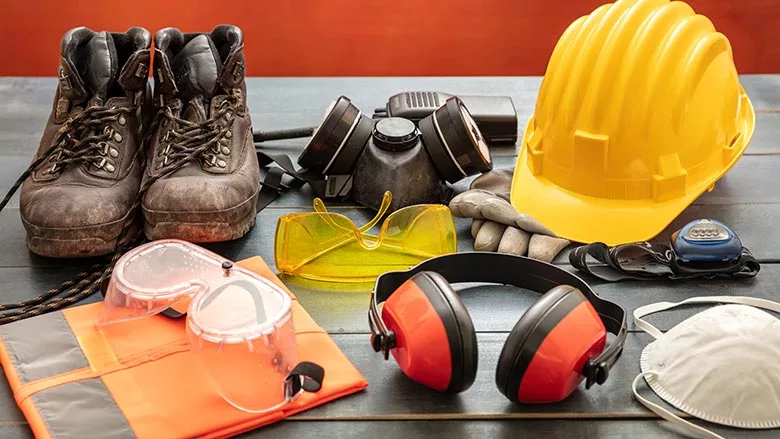How to Know if You are Overexposed to a Chemical
Employees Benefit by Educating, Advocating for Themselves

Just because exposure readings for a chemical fall within permissible exposure limits, doesn’t mean workers can’t protect themselves. People sensitive to dust and particulates, for example, should work with a respirator when conditions warrant it.
Source: Getty Images
Earlier this year, I wrote a series of columns on toxicology and the importance of having a written HazCom program. I’ve received a few messages from drillers wondering, “What do I do if I’m overexposed to a chemical?”
That’s not a cut-and-dried answer. I must ask myself a few questions. Do I feel signs or symptoms of overexposure? What chemical was I exposed to? If I feel signs or symptoms that don’t fade with time away from the jobsite, I may have been overexposed and should maybe see a licensed healthcare professional. If symptoms do fade, exposure to something remains a possibility but it may prove difficult to determine the level. Each chemical affects a person’s health in different ways. One person may have more or less sensitivity to a particular chemical compound than another.
Employers have a responsibility to provide a workplace free from recognized hazards. However, as an employee, you have the right and responsibility to familiarize yourself with the chemical compounds used during your work. Did you take the time to read the safety data sheet (SDS) or consult the NIOSH Pocket Guide to Chemical Hazards to determine the permissible exposure limit, handling instructions, disposal instructions and required personal protective equipment? If so, did you notify your employer of what you would need to work safely around that chemical compound? Although OSHA requires employers to provide a safe and healthful workplace, workers must often be their own best advocate.
Once you know the permissible exposure limit, how can you determine whether you have been overexposed? That requires site monitoring. Site monitoring is the process of collecting, detecting and measuring the site for chemical, physical and biological hazards. Monitoring might involve the air you breathe, noise exposure levels, flammable materials you work with or other hazards. Monitoring tells us about any hazards at the site, as well as their seriousness. It can also tell us what should be done to ensure your short- and long-term safety.
Most suspected cases of chemical exposure in the drilling industry would get confirmation using some type of air monitoring. Effective air monitoring tells you contaminants present at a site, as well as their concentrations. In most drilling exposures, we have brought the chemical to the site with us. This may require a person to wear some sort of personal monitor. OSHA, in its Technical Manual, calls personal monitoring the “gold standard” for determining employee exposures. It is the most reliable approach for assessing how much and what type of respiratory protection a given circumstance requires.
OSHA … calls personal monitoring the “gold standard” for determining employee exposures. It is the most reliable approach for assessing how much and what type of respiratory protection a given circumstance requires.
When it comes to airborne contaminants, personal monitoring should reflect the concentration of contaminants present in your breathing zone. The breathing zone extends to a 10-inch radius in all directions from your nose and mouth. Monitors might also place sampling devices on drilling equipment we work with and near any other areas of potential exposure.
So, we have a personal monitor that gives us readings throughout the day. How can we tell if we’ve been overexposed? Let’s use an example. Your personal monitor indicates exposure to a chemical of a permissible exposure limit (PEL) of 80. You show a level of at 80 ppm for 6 hours and 60 ppm for 2 hours. What is your average exposure for the 8-hour shift? To get that, we find something called the “time-weighted average” or TWA:
TWA = (concentration #1 x time #1) + (concentration #2 x time #2) / total time
Your monitor may record several difference concentrations over several different times. While this example has two for simplicity, all would factor into the TWA. Now, we plug in our numbers:
TWA = (80 ppm x 6 hours) + (60 ppm x 2 hours) / 8 hours
TWA = 480 ppm + 120 ppm / 8 hours
TWA = 75 ppm per hour
We have not exceeded the PEL of 80, so you still fall within the legal limit. However, this does not mean that you could not have adverse effects if you happen to be sensitive to that chemical. I would still suggest taking action and doing whatever you could to reduce exposure. That might include adding personal protective equipment (PPE) or different work practices, or using a less volatile chemical.
I hope this article sheds light on how industrial hygienists think about and utilize exposure limits. Until month, next month keep turning to the right.
Looking for a reprint of this article?
From high-res PDFs to custom plaques, order your copy today!



